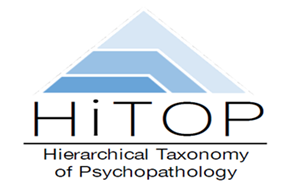Introduction

The Hierarchical Taxonomy of Psychopathology (HiTOP) system is an effort from various mental health disciplines to improve the organization, description, and measurement of psychopathology. It hews closely to existing data. HiTOP aims to address limitations of traditional nosologies, such as the DSM-5 and ICD-10, including arbitrary boundaries between psychopathology and normality, often unclear boundaries between disorders, frequent disorder co-occurrence, heterogeneity within disorders, and diagnostic instability.
HiTOP approaches these problems by conducting an empirical search for psychopathology structures starting from the most basic building blocks and proceeding to the highest level of generality: combining individual mental health signs and symptoms into homogeneous components or traits, assembling them into empirically-derived syndromes, and finally grouping them into psychopathology spectra (e.g., internalizing and externalizing).
This approach reduces within-disorder heterogeneity by grouping related symptoms together and assigning unrelated symptoms to different components. It makes comorbidity an explicit and predictable feature of the model by classifying related syndromes together. Finally, it describes psychiatric phenomena dimensionally, addressing boundary problems and diagnostic instability. Dimensional measures have been developed to assess many aspects of the system, and several domains of the HiTOP are ready for clinical and research applications.
The system is a work in progress. The figure below summarizes how eleven DSM-5 classes of mental disorders have been incorporated into the HiTOP to date.
- HiTOP model primer
- In-depth background to the HiTOP model and how it was developed
- How HiTOP can be integrated into your clinical practice
- How HiTOP can advance your research
Figure below summarizes how eleven DSM-5 classes of mental disorders have been incorporated into the HiTOP to date.
